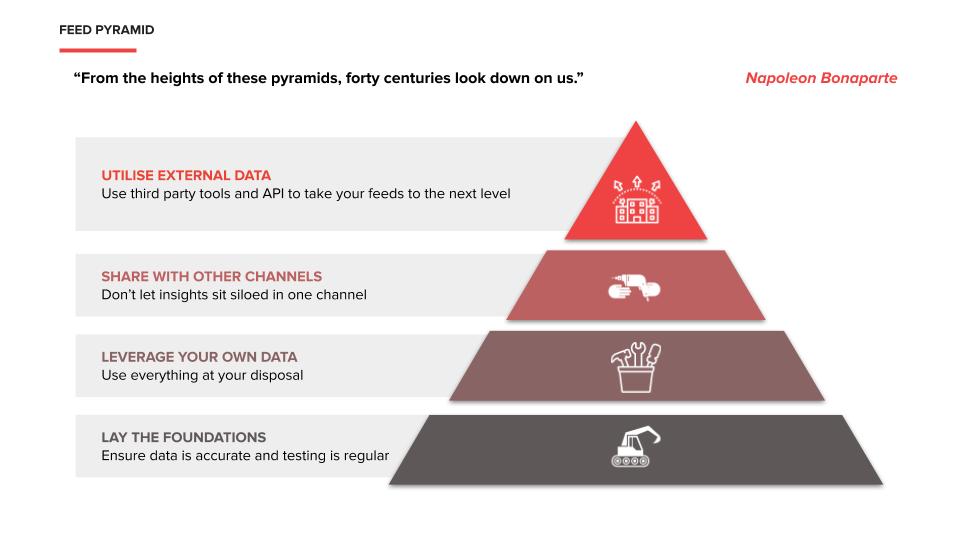Ad spend is tumbling globally with advertisers pulling back on budgets since Coronavirus hit. In the UK, the majority of marketers (86%) were delaying or reviewing marketing campaigns at the start of April, which was an increase from just 55% three weeks earlier.
A recent Nielsen study of the US market shows marked changes in consumer behavior, even before the official lockdown, with more going online to avoid shopping centers and malls.
However, marketers must take steps now to ensure that they remain relevant tomorrow. Whether that’s reassuring the customer their delivery is going to be scheduled as usual, or a travel company persuading consumers to book holidays next year and remove cancellation fees.
Effective marketing strategies might not be the easiest to enact at this time, however, there are things you can do to give yourself the best fighting chance, now or when things are back up and running. Feed management, not the most attractive tool in a marketer’s tool bag, but one that is underrated. If you haven’t already, it’s time to elevate the importance of feed management to the C-Suite.
There has never been a better time to invest in the projects that you normally don’t have time for, or to review your long-term strategies. In fact, it is likely that the consumer shift to buying (and buying confidently) online will continue post virus. Never has it been more important to get the digital basics right. Your data feed should be the foundations of all campaigns and automation, so this is where you should start.
At its simplest, feed management is the building and optimization of data to drive automated ads in the relevant channels and ad formats.
The key ad formats that use feeds tend to be Google Shopping, Dynamic Social and Dynamic Display, although realistically it is anything where you want to advertise on an individual item. This can be taken further by ensuring ads are always accurate, relevant and targeting the right audience irrespective of the channel or ad format.
Successful Feed Management Strategies
Successful feed management requires a complex, seamless approach, but often there is a disconnect between the teams managing the feed and those handling the media. And that often means the client ends up playing mediator between the two.
Think instead of the feed and media sitting in the same team or agency. This means that many processes can be streamlined, saving time and cutting miscommunication.
Saving time and money by consolidating these services will allow you to establish an all-channel customer-first approach putting your data at the heart of every decision.
Such a set-up also allows clients to work up through a data maturity pyramid to deliver insights that go beyond marketing – something that will prove powerful when the world gets back to normal. This pyramid encourages you to lay the foundations of accurate and reliable data, before moving onto ever-increasingly exciting areas to supercharge your data.
Shopping Shake-Up – Are You on Board?
One great way to enhance your marketing feeds is to look inwards at the data that is only available to you. Creating a feedback loop of performance data into your feeds can enable you to make decisions at scale across channels, and the benefits will be iterative.
Margin data can ensure that all your channels are working at profitability, something that I am sure will resonate with your directors and especially now. Even simpler things such as stock levels can allow you to make complex decisions like pausing product lines and keywords when your key sizes are out of stock.
Here the takeaway is to look inwards, and establish what you already have that you aren’t using; there is always something you are missing.
Another advanced tactic is to bring onboard third-party data to automatically change bids, budgets and ads. Warning, this is at the top end of the pyramid and we would always encourage you to ensure all other criteria are met before tackling this. Depending on the sector you sit in, you could look to bring all kinds of exciting external data into your data to make you stand out from the crowd. This can be anything but why not try some of these examples to get you started: Weather, Pollen, Fantasy Football Ratings, Sports Fixtures or Social Triggers. Honestly, your imagination is your only limit here.
Remember that the key to feeds is that decisions made in one place can be carried across to all channels, saving you time and money. We may be getting ahead of ourselves, because the recent announcement that Google Shopping is set for a shake-up means it is more important than ever to get the basics right. This means getting your data to a state where it is 100% correct and regularly updating. It also means paying special attention to your titles, product types, descriptions and images.
WIth free shopping already rolled out in the US and it coming to the rest of the World in stages, now is the perfect time to test and get everything in order.
When it comes to measuring performance here, it’s important to note that organic ads will only be appearing within the Shopping Tab, which means they’re going to have a relatively small impact on volumes. Estimates suggest that the volumes coming through the Shopping Tab make up between 2-10% of totals, which is still enough to have an impact on your campaigns.
Over time, it will be important to closely monitor your CPCs. While most merchants are already listed in shopping, any new entrants to space as well as fewer spots to compete for may cause CPC inflation – leading to increased costs within the SERP. Counterintuitively Google’s free Shopping could lead to marketers spending more overall as the space becomes crowded.
Competitor Data – Keep Your Friends Close And Your Competition Closer
While we have touched on some first and third-party strategies in earlier strategies, one other tactic you can use is to use price benchmarking data. This will tell you if you are more or less competitive on a given product than your competition, and hence whether it is worth putting a marketing budget behind it.
Google has a free version that you can look to leverage now, although the downsides of this is that it will not give you a detailed insight into what your closest competitors are doing.
For this speak to a comparison shopping company as they will be able to help benchmark you against those key competitors.
Get this right and you are not only making bidding decisions, but you are also now making buying and business decisions at the highest level through executive-level reporting suites.
If you are not a reseller or aren’t resold, then you should be returning back to your internal data to make a real difference. However, you can also start price benchmarking against individual search terms rather than items themselves. This should give you a good idea of whether you are pricing certain products correctly against the competition.
In short, while many marketers have pressed pause on big brand activity for obvious reasons, or instead pivoted to socially relevant and responsible messaging, there are simple, business-building measures that we can take with relatively little effort or budget.
It’s the 101 stuff we should be doing anyway but often gets forgotten. In these tumultuous times let’s look at the simple things we can do to set ourselves up for success today and tomorrow. It’s time to get back to building blocks.













Comments are closed.